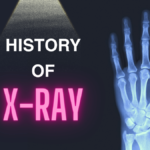Pain is typically a personal experience that can be difficult to express and define. It is important for medical practitioners and patients to understand the aspects of assessing pain to ensure that optimal solutions are given.
Pain affects individuals both emotionally and physically. Managing pain effectively is vital for recovery. Factors such as causes and symptoms of acute and chronic pain are considered along with various assessment tools and their functions.
Multidimensional Impact of Pain
Every pain experience is unique and goes beyond being a physical sensation. It is also linked to emotional responses and reactions that create a multidimensional overall experience for the individual.
- The emotional and physical consequences of pain can result in the inability to handle daily living activities, depression, irritability or fatigue.
- Chronic pain can affect economic and social wellbeing by limiting social activities and work.
- Since pain is often difficult to describe, people tend to use analogies such as a ‘pounding hammer’. These analogies are used to express what the pain feels like as well as the psychological effects of the condition.
- Patients need to be able to express their pain in order for others to comprehend what they are feeling as well as to get the help they require. When health professionals understand their patients’ pain, this makes it easier for them to provide a diagnosis for the problem and choose an effective treatment solution while monitoring their progress.
Assessing Pain
Pain assessment serves the purpose of:
- Identifying and describing pain to facilitate the process of diagnosis.
- Determining the cause of pain and best treatment program.
- Monitoring pain to establish whether or not the underlying disorder or disease is getting better or worse and the effectiveness of pain treatment.
The extent of pain assessment is based on the purpose and kind of pain being experienced.
Acute and Chronic Pain
Acute pain usually results from short-term pathological processes like a dislocation, sprain or surgical incision. As long as treatment is provided and there is not extensive damage, the pain resolves while the body heals.
On the other hand, chronic pain lasts for a long period of time. This is in reference to pain such as low back pain that is caused by pathological triggers but the pain persists even after healing occurs. Chronic pain also relates to continuous pathological processes like osteoarthritis that is caused by a dysfunctional or damaged nervous system.
Seeking Treatment
- An initial assessment helps both medical professionals understand why treatment is being sought, the treatment that has been previously tried and the current situation. After initial pain assessments, focus can shift to monitoring treatment, recovery and the progression of a condition.
- People are varied in terms of their abilities to talk about their pain. This is an important consideration for health professionals when selecting treatment strategies. When a patient is unable to report pain verbally, other options such as scales for pain rating can be used. These are tools that can also be used effectively with children.
- Although assessing pain can be a complex process, simply assessing the site of pain and severity is useful for determining the best way to get relief.











